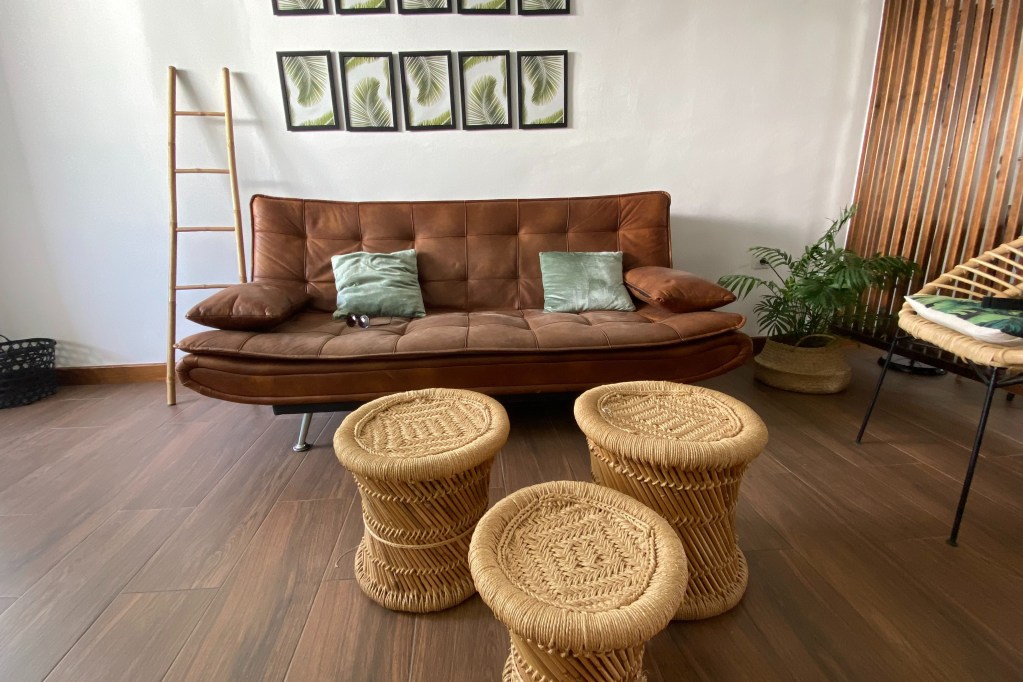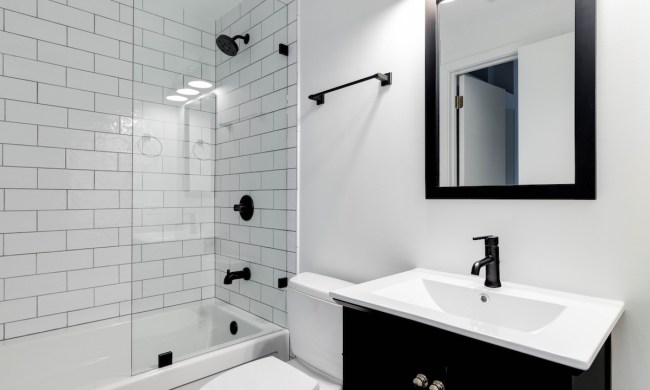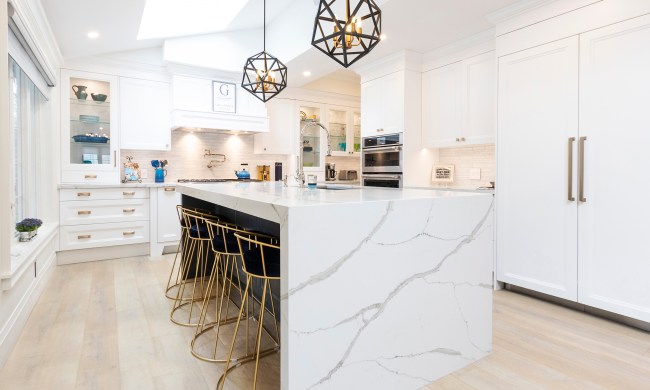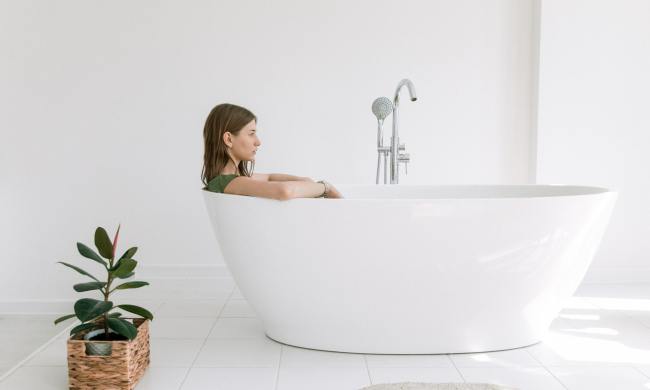
If you’re looking for a budget-friendly floor that will blend nicely with your home design, laminate flooring may be right for you. This easy-to-install and affordable flooring option may not be the most luxurious, but it can be a wonderful choice for the frugal homeowner who wants to spruce up their space.
But what is laminate flooring? How do you install it? Today, we’ll cover everything you need to know about laminate flooring so you can ensure you’re prepared to tackle your next interior project.

What is laminate flooring?
Laminate flooring is synthetic flooring with an image applique often mimicking the look of natural wood floors. This flooring is multilayered with a base layer of particleboard followed by a clear protective layer and topped with an image layer. This is done through a lamination process, hence the name.
Laminate flooring can come in various aesthetic styles thanks to the image layer, and it’s an affordable alternative for homeowners who crave the look of natural wood but don’t want to go over budget on home renovations.

How is laminate flooring installed?
Laminate flooring is super easy to install, making it a DIY-friendly choice. Grooves are indented into the edges of the floorboards, allowing the pieces to slot into each other easily while also preventing large gaps.
To install laminate flooring, an underlayment of foam or felt needs to go down atop the subfloor. This underlayment acts as a protective barrier between the subfloor and laminate flooring and a cushion to create a softer feel for footfalls. Before a homeowner begins installation, adding the proper underlayment, ensuring the floor is level, and considering any issues with laying laminate flooring (like potential water damage or humidity) is important.

What to know about laminate flooring
Laminate flooring can be an excellent choice for DIYers or homeowners with a limited budget. However, this flooring option still has its limitations. Here’s what you need to know about laminate flooring.
Pros of laminate flooring
- Laminate floors are easy to clean.
- It’s scratch-resistant flooring, making it a good option for low-mild traffic areas of the home.
- Laminate flooring can be self-installed easily, making it great for DIYers.
- It is an affordable option for many homeowners.
Cons of laminate flooring
- Laminate flooring isn’t suitable for every room, particularly in spaces where water may pool or sit.
- If it comes into contact with water, water damage can ruin the base layer.
- Boards may chip more than alternative flooring options.
- Laminate flooring isn’t as luxurious and may contribute to a lower resale value.

How does laminate flooring compare to other flooring options?
Before choosing laminate flooring for your space, it’s important to consider how it compares to other flooring options.
Laminate vs. hardwood
One of the greatest appeals of laminate flooring is that image technology today can replicate the aesthetic of hardwood in great detail. If you love the look of hardwood but don’t want the hefty price tag, laminate flooring can be a great alternative.
However, while these two flooring options share aesthetics, they aren’t quite the same. Hardwood flooring consists of 100% solid wood, while laminate flooring is made of particleboard and other synthetic layers. Hardwood is durable, can be sanded and stained, and is much thicker than laminate flooring. Unfortunately, laminate flooring cannot be sanded or stained since it isn’t real wood, and doing so will damage the image layer. Though, laminate flooring can be easier to clean and is more affordable.
Laminate vs. tile
Tiles can be made of many materials, though most are mineral products like stone or ceramic. Tile is often thick, solid, and hard. However, tile flooring can become damaged and broken by something with a greater hardness (for example, dropping a cast iron pan on the floor). Tile is also fairly water resistant and easy to clean, making it a great choice for bathrooms and kitchens.
Laminate flooring, however, isn’t as hard or thick as tile. Laminate flooring is flexible, thin, and can easily chip or break. This flooring is also not ideal for bathrooms and kitchens where the risk of water damage is higher. While laminate flooring can be more resistant to scratches and unlikely to break from something of a greater hardness falling onto it, it still isn’t the most durable flooring option.
Laminate vs. vinyl
Vinyl flooring is made from 100% vinyl products. It is a flexible flooring that is also water resistant. Where laminate flooring will swell and warp from excess water, vinyl flooring works well in moisture-rich locations like the bathroom or kitchen.
Laminate and vinyl flooring share many similarities, however. Both are flexible flooring options that are affordable and easy to install. Many DIYers love the ease of installation with both these flooring options and the budget-friendly price tag.
Knowing how laminate flooring works and what it can provide for your home is crucial for homeowners looking to embark on their next home renovation project. For some, laminate flooring is the best option, saving people money for other aspects of their reno. While for others, laminate flooring isn’t the most luxurious or durable option. Still, knowing the pros and cons of laminate flooring can help you decide whether it’s right for you and your family.



